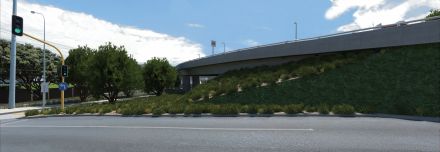When I arrived at the Basin Reserve flyover Board of Inquiry hearing this morning, I walked right past an anxious-looking gathering of NZTA’s hearing team. I’m not surprised they were looking anxious, because the hearing has been going badly for them right from the start way back on Monday 3 February – and matters have most certainly not improved since the hearing moved on to consider transport evidence.
You might think that the one area in which the New Zealand Transport Agency might exhibit some level of assurance is transport. I mean, it says “Transport” in their name, right? But so far, not only have they been forced to repeatedly shift the grounds on which they are advancing their long-cherished flyover project, but they have not been able to find a convincing comeback to the very cogent and detailed criticisms of their proposal put forward by witnesses called by Save the Basin and other organisations.
A star witness in this regard has been John Foster. Himself a former transport planner, he was able to point out flaws in NZTA’s evidence as his appearance began last week, as covered by the Dominion Post:
The traffic predictions used to justify the Basin Reserve flyover were based on dodgy calculations, critics say.
Retired transport planner John Foster set about discrediting the New Zealand Transport Agency’s transport modelling at the flyover’s board of inquiry hearing this morning.
Mr Foster, who previously worked on the Transmission Gully highway, Dowse Interchange and Wellington’s Inner City Bypass, appeared for flyover opposition group Save the Basin.
In documents presented to the four-member board, he said the benefits of the $90 million project had been overstated, mainly due to errors on the transport agency’s part.
(For more, see Critics question benefits of flyover.)
On Monday morning, John Foster was able to point out further basic errors in NZTA’s figures and assumptions – and after he finished, Richard Reid, appearing as an expert witness for the Mount Victoria Residents Association, provided a very clear and cogent presentation of his “Basin Reserve Roundabout Enhancement Option” (BRREO), which lays out a plan for improving traffic flows around the Basin Reserve at-grade, without needing to build either flyovers or underpasses.
All NZTA has proved able to do in return is attack the witness – not his evidence.
All of which leaves me with two thoughts:
1) A phrase I’ve used about building a flyover at the Basin Reserve is that it would be ugly, unnecessary and unjustified. The hearing so far has been shown how it’s unjustified, because NZTA avoided consulting seriously on any option that wasn’t a flyover. Now the hearing is being shown how a flyover is unnecessary to meet transport needs. And in coming weeks they’ll be hearing a whole lot about how ugly a massive motorway flyover imposed on an iconic part of Wellington would be.
2) The more I see of NZTA’s hearing evidence, the more surprised I am at its low quality. For an organisation that brags about its expertise, it has done a very poor job of presenting its case. Perhaps over-confidence is the problem, or perhaps NZTA’s case is fundamentally deficient to begin with?
